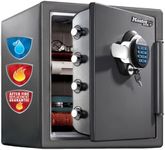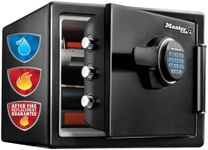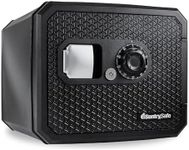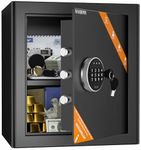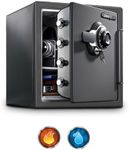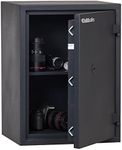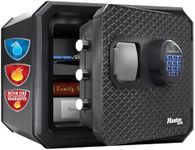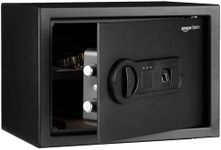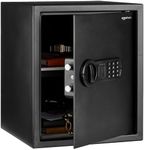Buying Guide for the Best Home Safes
Choosing the right home safe is crucial for protecting your valuables, important documents, and sometimes even irreplaceable items. When selecting a home safe, it's important to consider various factors that will ensure the safe meets your specific needs. Here are some key specifications to look at and understand how they can impact your choice.Size and CapacitySize and capacity refer to the physical dimensions of the safe and the amount of storage space inside. This is important because you need to ensure the safe can accommodate all the items you plan to store. Safes come in various sizes, from small ones suitable for documents and jewelry to larger ones that can hold multiple items including electronics. Consider what you need to store and choose a size that fits those needs without being excessively large.
Locking MechanismThe locking mechanism is how the safe is secured and accessed. Common types include key locks, combination locks, electronic keypad locks, and biometric locks. This spec is important for security and convenience. Key locks are simple but can be lost, combination locks are reliable but require memorization, electronic keypads offer quick access but need batteries, and biometric locks provide high security but can be more expensive. Choose a locking mechanism based on your preference for security and ease of access.
Fire ResistanceFire resistance indicates how well the safe can protect its contents from fire damage. Safes are rated by the duration they can withstand high temperatures, typically ranging from 30 minutes to several hours. This is crucial if you want to protect documents, cash, or other items from fire. Consider the fire rating based on the level of fire risk in your area and the importance of the items you are storing. Higher fire resistance is better for more valuable or irreplaceable items.
Water ResistanceWater resistance refers to the safe's ability to protect its contents from water damage, which can be caused by flooding or other water-related incidents. This is important if you live in an area prone to flooding or if the safe will be placed in a location where it might be exposed to water. Look for safes with a water resistance rating to ensure your items remain dry and undamaged.
Burglary ProtectionBurglary protection measures how well the safe can withstand attempts to break into it. This includes the thickness of the walls and door, the type of locking mechanism, and additional security features like anti-drill plates. This spec is crucial for protecting valuable items from theft. Safes are often rated for burglary resistance, with higher ratings indicating better protection. Choose a safe with a burglary protection level that matches the value and importance of the items you are storing.
Installation TypeInstallation type refers to how the safe is installed or placed in your home. Options include freestanding safes, wall safes, and floor safes. This is important for both security and convenience. Freestanding safes are easy to place but can be moved, wall safes are discreet but require installation, and floor safes offer high security but need to be embedded in the floor. Consider your home's layout and your security needs when choosing the installation type.
